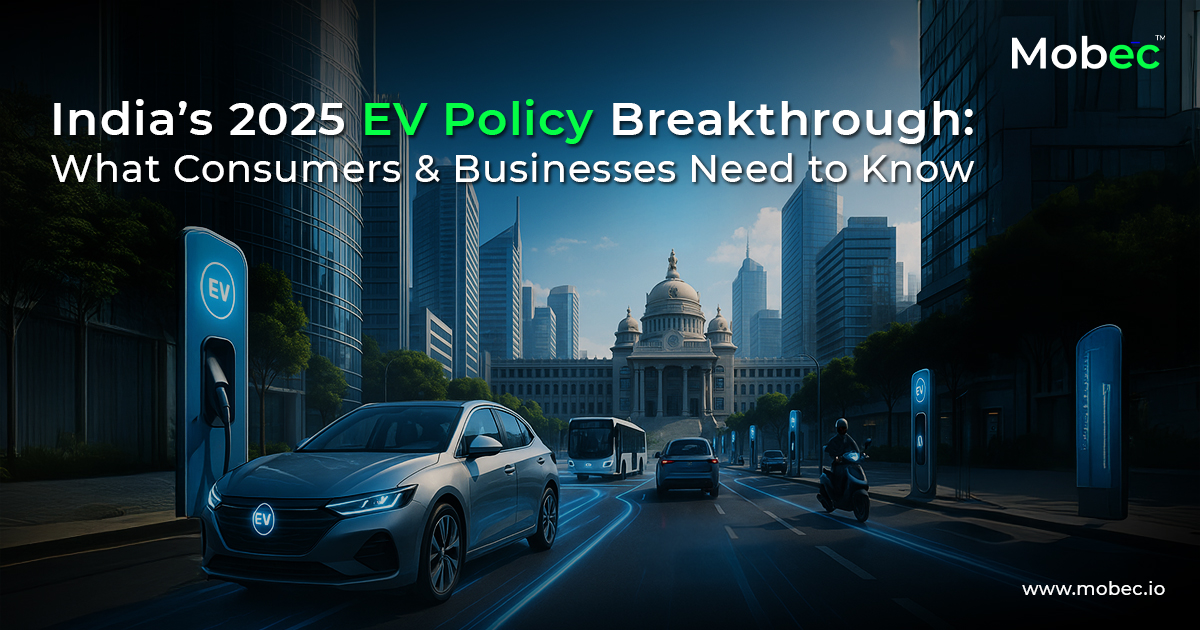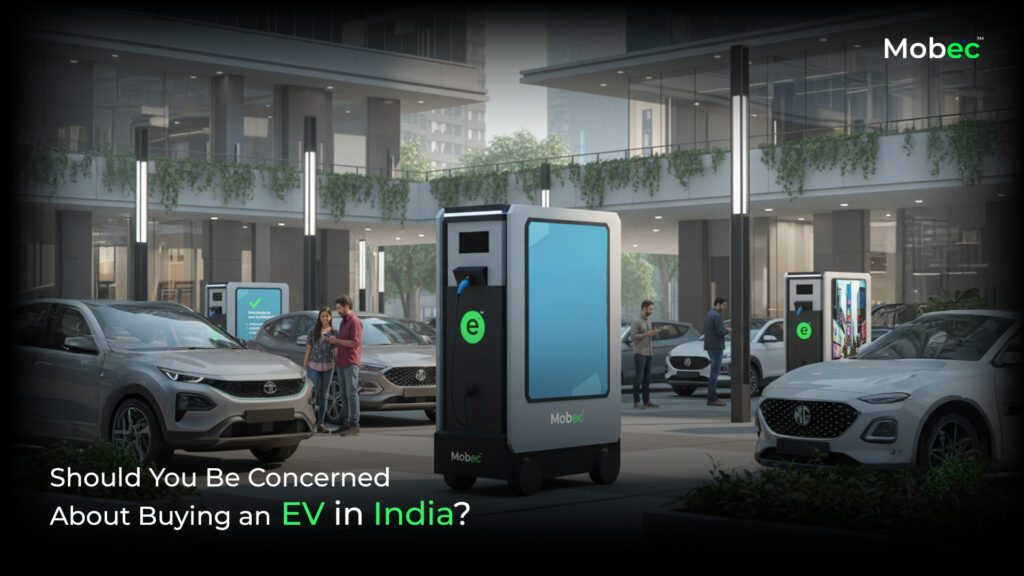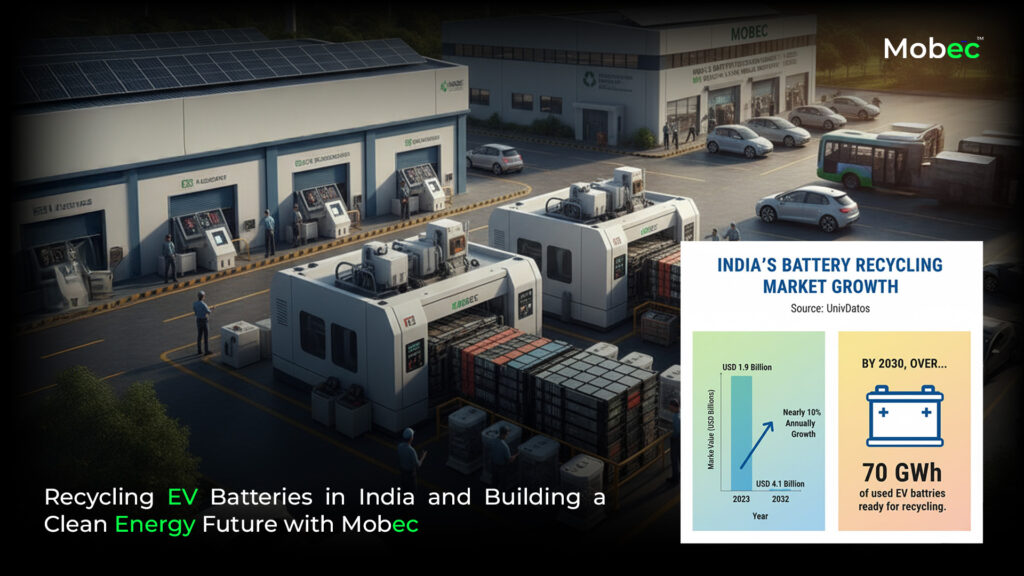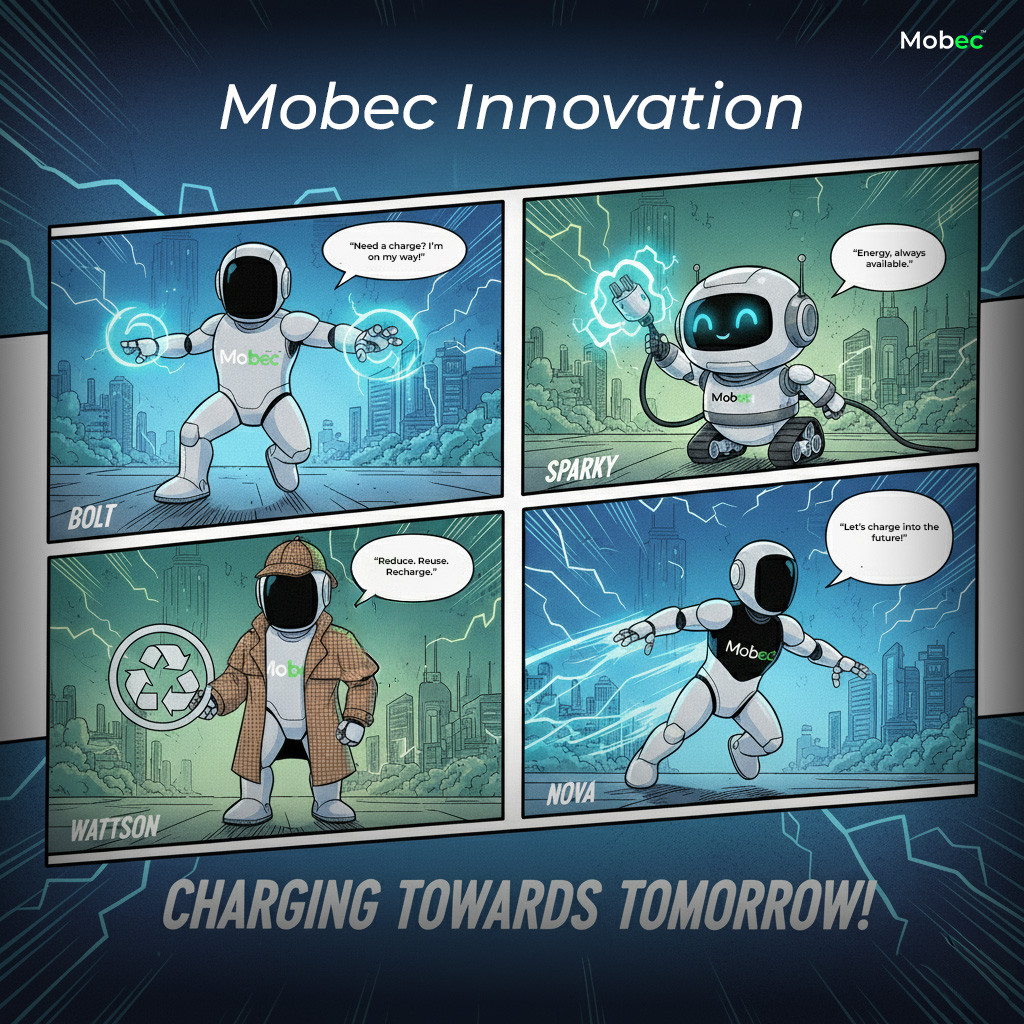2025 isn’t just another year in India’s electric mobility journey – it feels like the year everything finally clicks. For a long time, government EV policy and subsidies sounded good on paper, but now they’re actually starting to show up in ways that matter to ordinary people: lower prices, better infrastructure, and real support for going electric.
At Mobec, we believe policies only matter when they change people’s lives. That’s why we’re not just watching India’s EV transition – we’re powering it with real solutions like smart EV chargers, Energy storage systems (ESS), and battery recycling solutions.
So if you’ve been wondering whether this is the right time to switch to an EV – here’s what’s new, what it means for you, and what to keep an eye on.
Big Policy Shifts in 2025 That Matter to You
Cheaper EV batteries = lower EV prices
With the government introducing EV policy such as import duty exemptions on battery components, the cost of EVs is finally dropping. Since batteries make up almost 40% of an EV’s cost, this single move makes EVs more affordable for families, delivery fleets, and even first-time buyers.
PM E-DRIVE broadens the scope
Launched in late 2024, PM E-DRIVE isn’t just about cars – it covers two-wheelers, three-wheelers, buses, and even e-ambulances. It also invests in more charging stations across the country, so EV adoption feels less like a leap of faith and more like a practical choice.
GST relief for consumers
The 56th GST Council (Sept 2025) kept GST on EVs at just 5%, while also cutting GST on renewable energy devices from 12% to 5%. That means not only are EVs cheaper, but installing solar-backed charging at home or offices is more cost-friendly than ever.
FAME III: Smarter subsidies, safer EVs
The FAME (Faster Adoption and Manufacturing of Electric Vehicles) scheme entered its third phase in 2025. This time, it’s not just about discounts – it’s about building trust. FAME III focuses on stricter battery safety standards, wider subsidy coverage for two-wheelers and fleet vehicles, and boosting local manufacturing under “Make in India.”
PLI Scheme powers manufacturing
With the Production-Linked Incentive (PLI) scheme pushing for domestic EV and battery production, consumers can look forward to better availability, more model choices, and faster servicing – without depending heavily on imports.
How Mobec Turns EV Policy Into Reality
While such EV policy make Electric vehicle cheaper and more accessible, adoption still hinges on one thing: convenience. That’s where Mobec comes in.
- Mobile Charging Solutions
Running out of charge no longer needs to be a worry. With Mobec’s mobile EV charging solutions, power comes to you – whether you’re stuck at home, on the road, or at work. It’s charging on demand, designed for real Indian roads and real Indian lifestyles.
- Energy Storage Systems (ESS)
Mobec is helping homes and businesses take control of their energy needs with smart battery storage systems. By combining renewable energy with ESS, you can store clean power and use it anytime – cutting bills and keeping your EV charged even during power cuts.
- Battery Recycling Solutions
The EV revolution can’t be truly green without addressing batteries at the end of their first life. That’s why Mobec is investing in battery recycling solutions that give old EV batteries a second purpose – powering homes, businesses, and even local grids. Instead of creating waste, we’re creating a circular, sustainable future.
By aligning with government EV policy, Mobec ensures subsidies and incentives don’t just sit on paper – they turn into real solutions that improve people’s everyday lives.
Why 2025 Is a Turning Point
Earlier, EVs felt like a niche choice. In 2025, they’re becoming the default option. Here’s why:
- Affordable for everyone: EV Policy now go beyond luxury cars – they cover two-wheelers, delivery vans, and even ambulances.
- Charging everywhere: It’s no longer a metro-only story. Charging stations are spreading to Tier-2 cities and even rural areas.
- Made in India, for India: EVs aren’t just being assembled; they’re being fully manufactured here – creating jobs, cutting costs, and boosting local industries
What This EV Policy Means for You
For Families – Lower upfront costs, easy charging at home, and greener travel options.
For Businesses – Smarter fleet charging, lower running costs, and better ROI with government-backed incentives.
For India – Reduced oil imports, cleaner air, stronger local industries, and a leadership role in the global EV shift.
Looking Ahead
Looking past 2025, this policy is only set to get stronger. The government has already rolled out important initiatives like the Green Urban Transport Fund (2026) for e-buses, subsidies to encourage shared mobility, and the National Highway EV Corridor (2027) to make ultra-fast charging available across the country.
But Mobec isn’t waiting for tomorrow – it’s powering the change today. With mobile charging solutions that bring power to your doorstep, energy storage systems (ESS) that make renewable energy reliable, and battery recycling initiatives that turn old batteries into new opportunities, Mobec is ensuring India doesn’t just adopt EVs – it leads the way in truly sustainable electric mobility.
Conclusion
2025 marks the year when India’s EV story stopped being “someday” and became “right now.” With strong government policies and Mobec’s ground-level solutions, the EV revolution is no longer a distant promise.
From scooters in city streets to family cars on highways, EVs are becoming a normal part of life. Mobec makes it simple with mobile chargers, energy storage systems, and battery recycling – keeping every journey powered and sustainable.







